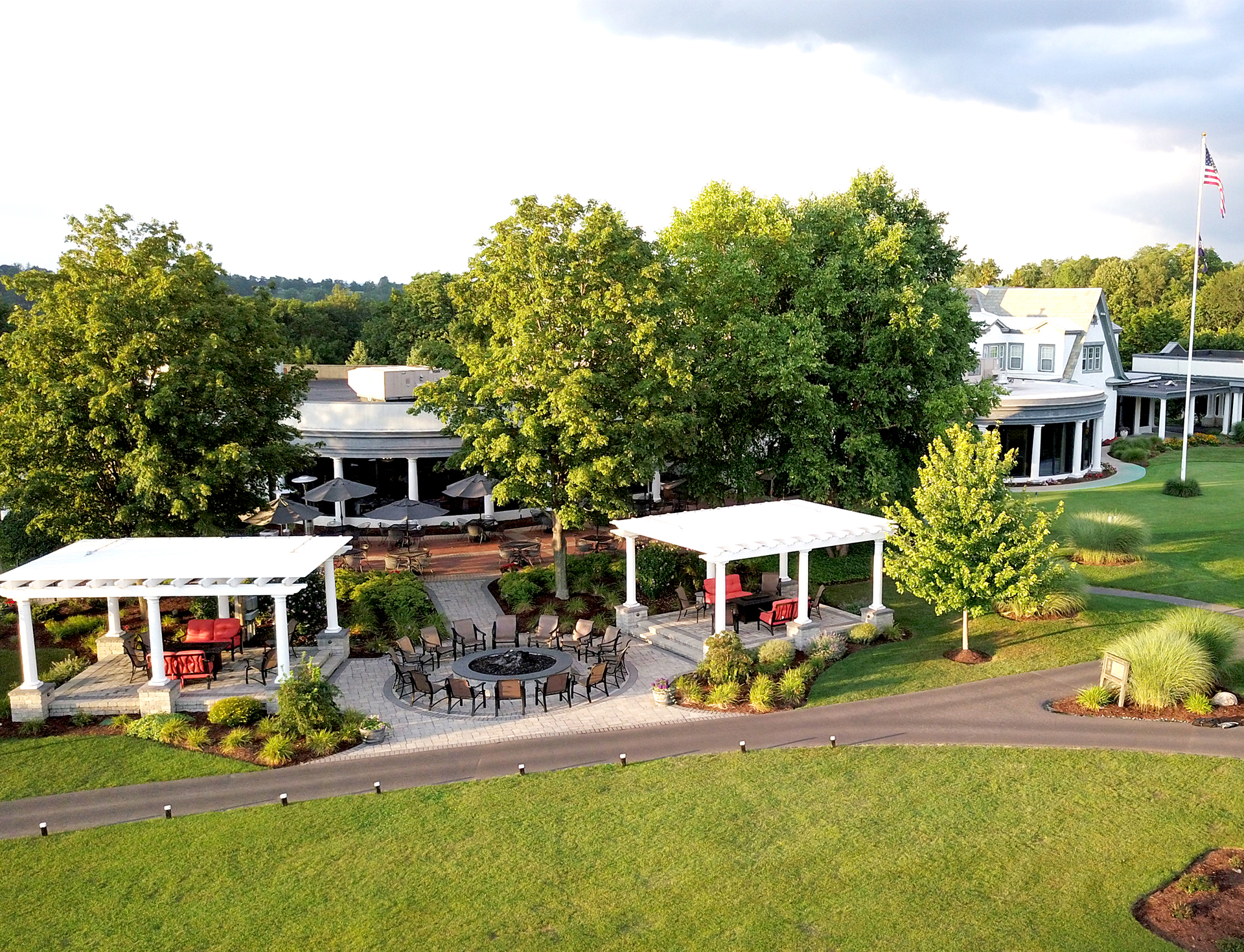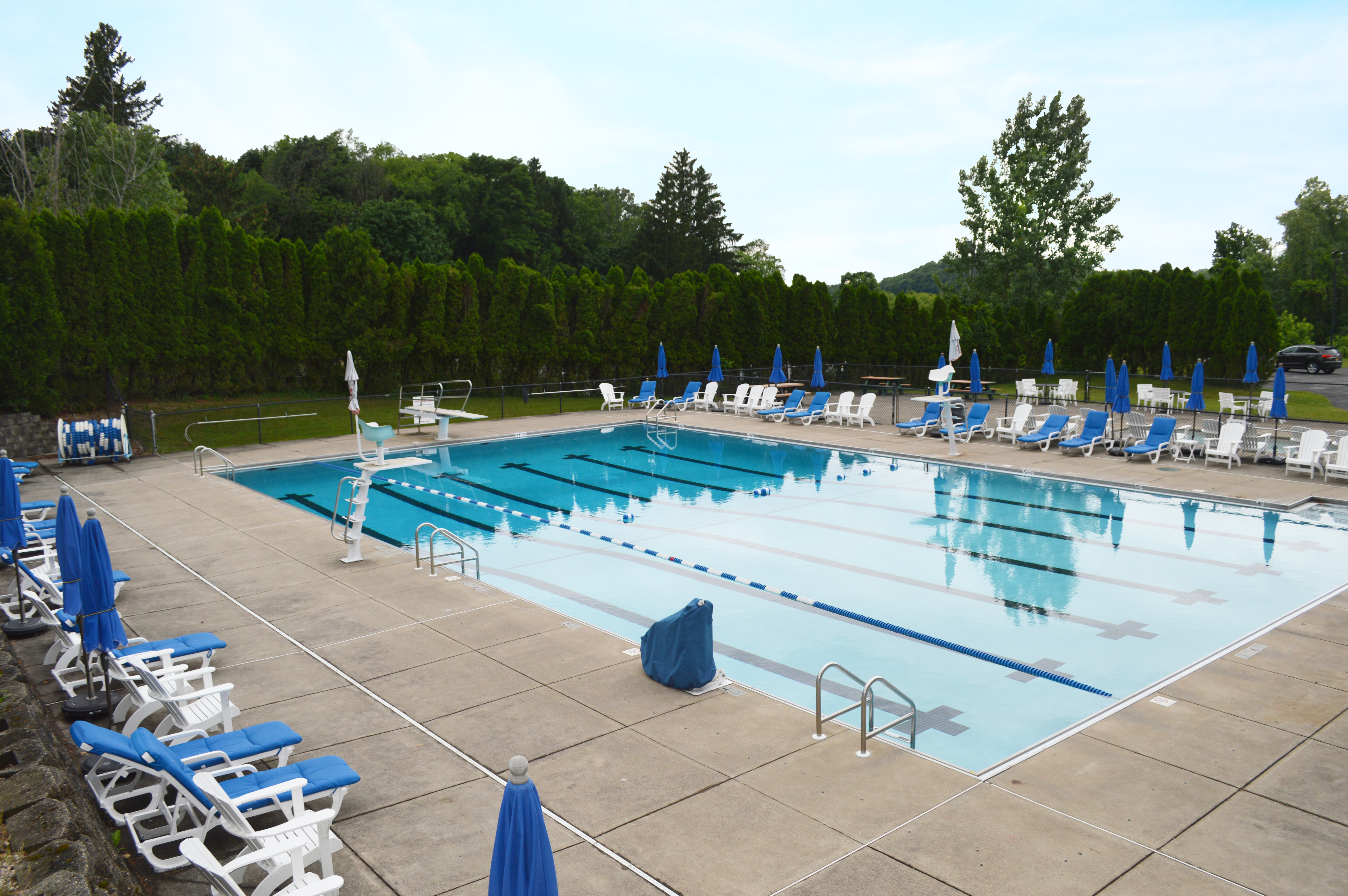Course Tour
Hole: 1
Par: 4
434
413
361
Handicap: 11
Red Handicap: 9
The challenge begins here. Out of bounds borders the hole from tee to green on the left. A pond and trees on the right make a straight drive a must. Trees surround a rolling green with a trap at the right front. A strong par four.
Hole: 2
Par: 4
380
365
294
Handicap: 3
Red Handicap: 3
A most deceptive hole. Your tee shot must be played short of the creek, leaving you 160 yards uphill to a fast, undulating green.
Hole: 3
Par: 3
121
95
90
Handicap: 17
Red Handicap: 17
Short but sweet. The green is large and surrounded by traps. Putting will be a challenge here, as the green is banked and full of breaks.
Hole: 4
Par: 4
427
418
410
Handicap: 7
Red Handicap: 11
Rated as Bellevue’s toughest hole, a long, straight drive is a must. The fairway makes a gentle turn to the right. Traps on both sides of the green will catch misdirected second shots and out of bounds lurks behind the green. Four is a good score here.
Hole: 5
Par: 5
495
475
404
Handicap: 1
Red Handicap: 1
The yardage makes this a birdie hole for long hitters, but playing uphill adds some difficulty. Two straight woods and a short pitch to the well-trapped green is the best chance to get that birdie.
Hole: 6
Par: 4
360
345
310
Handicap: 5
Red Handicap: 13
A large and very dominant elm tree makes the landing area for drive more demanding. A large, well-trapped green makes this hole a fair par four with birdie possibilities.
Hole: 7
Par: 3
155
136
131
Handicap: 15
Red Handicap: 15
Don’t be fooled by this relatively short par three. It requires anything from a seven-iron to a wedge, depending on the wind. Well-trapped in front and on both sides, this crowned green can leave you with many difficult putts. Misreading this green with its undulations will make part most difficult.
Hole: 8
Par: 4
391
359
300
Handicap: 13
Red Handicap: 5
Bellevue’s added water here in front of the green requires longer hitters to lay up on their shots. With the hole playing longer, accuracy is now more of a premium. Going left or right on tee shots disallows making the green in two.
Hole: 9
Par: 4
382
373
322
Handicap: 9
Red Handicap: 7
A tough driving hole that doglegs to the right. If the tee shot is a bit too far, it can carry through the bend and wind up in the woods. Cutting the dogleg can be dangerous with many trees protecting the corner. The green is fairly large and slopes from right to left.
Hole: 10
Par: 5
491
471
403
Handicap: 6
Red Handicap: 4
An easy birdie or double bogie, if the second shot is not properly placed. Long hitters may get home in two but the opening is narrow and protected by bunkers. Trees to the left of the green make recoveries difficult. Many players choose to lay up with their second shot and depend on an accurate approach for their birdie attempt.
Hole: 11
Par: 4
360
347
325
Handicap: 12
Red Handicap: 4
One of our newer holes, the intimidating, narrow driving area causes many players to choose the long iron off the tee for accuracy. Fairway bunkers on both sides actually stop many mis-hit shots from going into the trees. Bold players can drive very close to the green, which is trapped left and right.
Hole: 12
Par: 5
535
488
432
Handicap: 4
Red Handicap: 6
A bunker on the corner awaits the player who tries to cut this right angle dogleg. Out of bounds is to the left the length of the hole. The green is elevated and trapped on the right. A properly positioned tee shot makes getting home in two a possibility.
Hole: 13
Par: 3
203
178
134
Handicap: 18
Red Handicap: 18
This highly elevated tee overlooks a slightly elevated green. The green is extremely narrow in front and widens toward the back. One trap left and two traps right increase the narrowness to create a demanding tee shot. The green slopes back to front, making all long shots extremely treacherous putts.
Hole: 14
Par: 4
397
358
295
Handicap: 14
Red Handicap: 10
An unusual view from the tee as you look down the fairway to the huge stone ledge. Just before the ledge, the fairway doglegs about 60 degrees through a narrow opening to a slightly elevated, large green. The green is guarded on the right by a large trap. Both tee shot and second shot must be well-placed or extreme trouble is found. An undulating surface that is difficult to putt makes this a good par four.
Hole: 15
Par: 3
161
153
142
Handicap: 16
Red Handicap: 16
Seven yawing traps surround the smallest green on the course. Prevailing westerly winds change the yardage by the minute. The green sets into the side of the hill sometimes causing optical illusions when reading putts. A very good par three.
Hole: 16
Par: 4
459
434
402
Handicap: 2
Red Handicap: 14
The second longest par four on the course, this layout demands not only distance, but perfect placement. A tee shot to the left side of the fairway leaves a second shot that must be drawn. If any shot strays from the fairway, the players will undoubtedly have found trees. A most challenging par four.
Hole: 17
Par: 4
335
316
305
Handicap: 10
Red Handicap: 2
The trickiest hole at Bellevue. Tee shots must be hit center or right, or trees will separate the player from the hole. The green high on the hill creates an always blind shot to the pin and is fronted by three deep traps. Don Ross smiles at this Bellevue’s most undulated green.
Hole: 18
Par: 4
454
433
410
Handicap: 8
Red Handicap: 12
This long, demanding par four is dominated by out of bounds left, bordered by willows and a tree grove on the right. The green is protected front left and right by traps and slopes away from the player. A great finishing hole in the Bellevue tradition.






